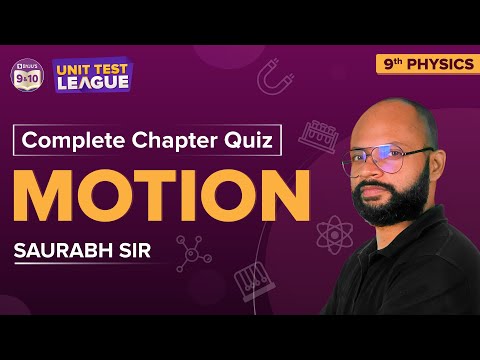The concept of motion in physics is one of the important topics in Classical Mechanics. Did you know that everything in the universe is always moving? Even if you are completely still, you still belong to the earth which is continuously moving about its axis and around the sun. Motion means a change in the position of an object with reference to time.

|
Table of Contents: |
What Is Motion in Physics?
In physics, motion is the change in position of an object with respect to its surroundings in a given interval of time. The motion of an object with some mass can be described in terms of the following:
- Distance
- Displacement
- Speed
- Velocity
- Time
- Acceleration
Watch the video and learn more about laws of motion

Types of Motion in Physics
The motion of an object depends on the type of force acting on the body. Examples of different kinds of motion are given below.
- Translational – It is the type, where an object moves along a path in any of the three dimensions.
- Rotational – It is the type, where an object moves along a circular path about a fixed axis.
- Linear – It is a type of translational motion where the body moves in a single direction along a single dimension.
- Periodic – It is the type of motion that repeats itself after certain intervals of time
- Simple Harmonic – It is the type of motion like that of a simple pendulum where a restoring force acts in the direction opposite to the direction of motion of the object. This restoring force is proportional to the displacement of the object from the mean position.
- Projectile – It is the type of motion which has a horizontal displacement as well as vertical displacement.
- Oscillatory – It is the type of motion which is repetitive in nature within a time frame. If it is mechanical it is called vibration.
Read More: Laws of Motion
Laws of Motion
Newton’s Laws of Motion laid the foundation for classical mechanics today. Although subject to minor limitations, these laws of motion are valid everywhere and are therefore used. The laws are given as stated below in a brief description
- First Law: Any object will remain in its existing state of motion or rest unless a net external force acts on it.
- Second Law: If an object has a certain mass, the greater the mass of this object, the greater will the force required to be to accelerate the object. It is represented by the equation F = ma, where ‘F’ is the force on the object, ‘m’ is the mass of the object and ‘a’ is the acceleration of the object.
- Third Law: For every action, there is an equal and opposite reaction.
The below video provides the Top 10 NTSE Important Questions on Motion Class 9

Frequently Asked Questions – FAQs
What is Periodic Motion?
What is Rotational Motion?
What is Newton’s First Law of Motion?
State Newton’s Third Law of Motion.
What is Oscillatory Motion?
The below video provides the complete quiz of the chapter Motion Class 9

Motion is an important concept in Physics which can be better understood by applying conceptual knowledge to solve problems. Stay tuned with BYJU’S and learn various interesting physics topics with the help of engaging video lessons.

I love it
It is really very very helpful
Yes,very nice explain action in BYJUS and I already registered in BYJUS
this is very helpful thank you
I love BYJU’S
Wow very informative thank you
Very nice explaination.
Very nice
very nice notes
It’s really helpful and it’s easy to understand with BYJU’S
Very good achha hai
It’s really helpful and easy to understand 👍👍
that’s nice
Thank you I love this
Very good app i am already registered this app